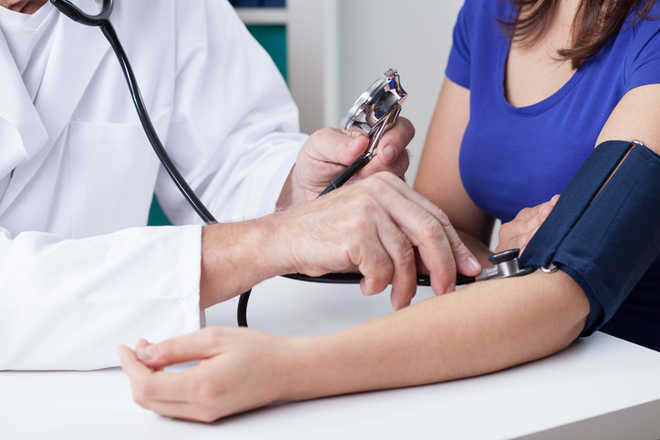Triple pill’ – a drug combining doses of three blood pressure-lowering medications – can significantly increase the number of patients reaching their healthy BP targets, a study has found.
Despite the availability of effective blood pressure-lowering drugs, high blood pressure remains a major problem around the world, researchers said.
Effectively treating high blood pressure can help to prevent heart attacks, strokes and kidney problems.
Globally, however, many people with high blood pressure receive no treatment, and only about a third of those who are treated achieve recommended reductions in blood pressure.
Achieving desired reductions in blood pressure often requires treatment with more than one medication, which increases the complexity of treatment, and patients often have difficulty adhering to regimens that involve taking multiple pills every day.
“Most people – 70 per cent – reached blood pressure targets with the Triple Pill,” said Ruth Webster, from the University of New South Wales in Australia.
“The benefits were seen straight away and maintained until six months, whereas with usual care control rates were 55 per cent at six months and even lower earlier in the trial,” said Webster.
“Based on our findings, we conclude that this new method of using blood pressure-lowering drugs was more effective and just as safe as current approaches,” she said.
The study was the first large trial designed to test the theory that starting treatment with low doses of three drugs could achieve better blood pressure control compared with usual care and that combining these drugs in a single pill would make it easier both for doctors to prescribe treatment and for patients to adhere to it.
The trial conducted in Sri Lanka enrolled 700 patients whose average age was 56 years, 58 per cent of whom were women.
Over half (59 per cent) were receiving no treatment for high blood pressure before they enrolled in the trial. In addition to high blood pressure, 32 per cent of participants had diabetes or chronic kidney disease.
Patients were randomly assigned to receive either the combination pill or usual care. The Triple Pill consisted of the blood pressure medications telmisartan (20 mg), amlodipine (2.5 mg) and chlorthalidone (12.5 mg).
These medications use different mechanisms to reduce blood pressure by relaxing the blood vessels, so the heart does not need to pump as hard to send blood throughout the body.
Usual care meant that patients received their doctor’s choice of blood pressure-lowering medication.
The trial’s primary endpoint was the proportion of patients who achieved a blood pressure target of 140/90 mm Hg or less at six months.
Compared with patients receiving usual care, a significantly higher proportion of patients receiving the Triple Pill achieved their target blood pressure at six months.
The average reduction in blood pressure was 8.7 mm Hg for participants receiving the Triple Pill and 4.5 mm Hg for those receiving usual care.
At six months, 83 per cent of participants in the Triple Pill group were still receiving the combination pill and one-third of those in the usual-care group were receiving at least two blood pressure-lowering drugs. Rates of participants having to change treatment due to side effects were not significantly different in the two groups (6.6 per cent for the Triple Pill, 6.8 per cent for usual care).
This should allay concerns that use of the three-drug combination pill could lead to an unacceptable increase in adverse medication side effects, Webster said.




 Driving Naari Programme launched in Chandigarh
Driving Naari Programme launched in Chandigarh































